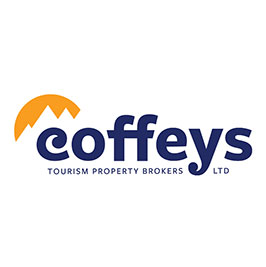
It is generally accepted that as motel leases become shorter than 20 years, the market perceives those to have a lesser valuer and also a diminishing value. For this reason, more often than not, a lease extension is negotiated with the landlord. There are a number of reasons why it benefits both the landlord and the lessee (motelier) to extend the lease and these points are discussed in a separate article at www.coffeys.co.nz/news/Lease Values & Extensions.
Sometimes although rarely, for various reasons, the leases are not able to be extended and we find it difficult to appraise these as there is a scarcity of evidence from similar sales. A method has been devised to assess such situations. This provides a sound mathematical formula taking into account the effect of diminishing years. It may enable buyers to compare motels with shorter leases to those with longer leases and see the difference in the return offered
It is emphasised that this approach is only appropriate where a lease extension is simply not an option. The impact on value that this formula suggests is generally far greater than the cost of extending a lease in most situations..
The starting point to apply the formula is to calculate the value of a standard new lease (say 30 to 35 years) based on the net profit capitalised at the appropriate rate, depending on the location of the property within New Zealand, standard of presentation and a number of other factors. Capitalisation rates (or rate of return on investment) vary throughout New Zealand. (See separate article www.coffeys.co.nz/News-Articles/What-You-Get-Is-Where-YouBuy/).
Returns are generally calculated at between 20% to 25%. This is the return on investment offered, based on the profit after all normal running costs, including rent, but excluding interest, depreciation and return to management.
With a shorter lease, the main concern may be to preserve the capital invested at the outset. Apart from achieving an appropriate return on investment, relative to the market, a buyer would look to achieve an additional premium return to offset the potential erosion of the capital value of the lease as the years run down. In other words, the total return on investment needs to be higher to compensate for a lack of capital appreciation. (The potential bonus here for a purchaser is that if the situation were to change in the future and they were able to negotiate a lease extension, the additional return in the meantime will have been an extra benefit.) If however a lease extension cannot be negotiated at any point, additional profits will have in theory been “banked” along the way. If the lessee’s accountant is able to amortise (depreciate for tax purposes) the loss of goodwill against income, this may create a tax deduction which would offset the additional profit for tax purposes.
We have prepared a spreadsheet to quickly calculate the formula and this is available upon request. Basically the approach is as follows:
We appreciate that this can be hard to follow and would be happy to answer any questions.
Using the above example and, assuming there is no growth or decline in revenue and profitability, after a further five years the lease would have a value of $434,000. The supplementary profit of $36,000 per year earned over and above the normal return would equate to $180,000 of additional profit over that time.
If this formula can be adopted by the industry generally, it could pave the way forward for a methodical and acceptable approach to valuation of shorter term motel leases.